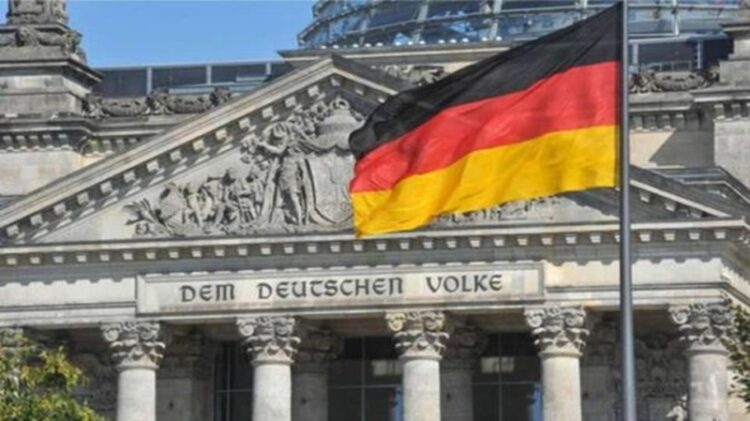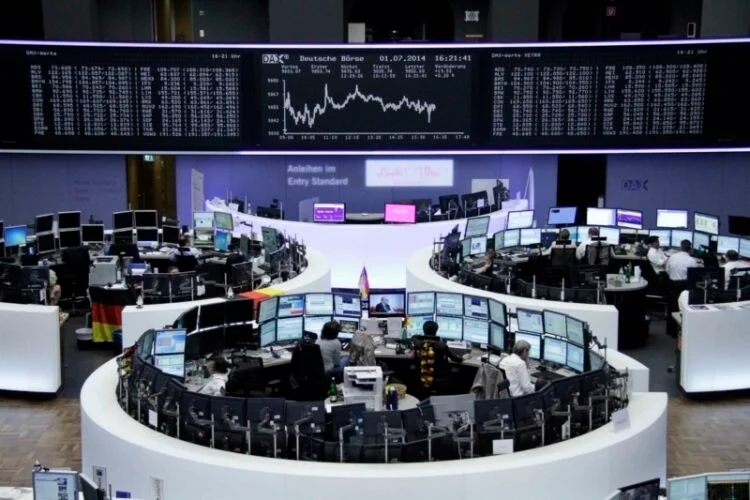Publisher: Maaal International Media Company
License: 465734
The Economist: Germany’s economy from bad to worse
اقرأ المزيد
German Economy Minister Robert Habeck said this month that his country’s economic conditions are “unsatisfactory” after cutting official forecasts from 0.3% growth to a 0.2% contraction. This comes after GDP fell by 0.3% last year, meaning Germany is facing its first two-year recession in more than 20 years.
According to the British newspaper The Economist, Germany’s economy – Europe’s largest – has barely slowed since the Corona pandemic, lagging behind the rest of the rich world, with Isabel Schnabel of the European Central Bank noting that the growth of the eurozone excluding Germany has been “remarkably resilient” since 2021 and faster than the growth of many other major economies.
But talking about the eurozone economy without Germany, according to the Economist, is like talking about the American economy without California and Texas, and the country that was once an engine of European growth has become a burden, according to the Economist.
The newspaper pointed out that it is difficult to imagine worse conditions for the export-dependent German economy and heavy industries than those it has faced since 2021, when energy prices rose with the outbreak of the Russian-Ukrainian war and now China’s excess industrial capacity is causing chaos abroad.
However, as convenient as it may be to blame external factors for the weak economy, Germany’s problems are deeper, many of them domestic, and moreover, the divided three-party government coalition is hampering the political response.
The Economist reported that industrial production has suffered in recent years, with energy-intensive industries such as chemicals, metallurgy and papermaking being particularly hard hit. These sectors, which together account for only 16% of German industrial output but consume nearly 80% of industrial energy, have been particularly hard hit.
Many companies have responded to rising energy costs by temporarily halting production, according to Al Jazeera. The changing patterns of global demand are a bigger problem for most companies, according to the British newspaper. As Pictet Wealth Management notes, the economic relationship between Germany and China has shifted. The two countries grew in a complementary way in the first decade of the 21st century, when Germany sold cars, chemicals and machinery to China, and in turn bought consumer goods and intermediate inputs such as batteries and electronic components. Now, China is able to produce much of what it once imported, and in some cases, it has become a serious competitor for export markets, especially in the basic goods that Germany produces, such as cars. But the pessimism about German industry may be overstated. Although manufacturing output has fallen since 2020, its gross value added has been remarkably stable, and in many cases, manufacturers have been able to shift to producing higher-value goods even as they lose market share.
Last year, as the overall economy contracted, trade was among the growing sectors, and that looks set to happen again this year. The newspaper said that the growth in real household incomes, coupled with low inflation, has not boosted demand, but it should eventually show up in consumer spending, and the worst of the energy crisis that the industry suffered is over. Most observers expect growth to rebound next year, and the government is forecasting growth of 1.1% in 2025 and 1.6% in 2026, based on the assumption that private consumption will start to recover. For some skeptics, the ministers assume that this will happen in part because of their growth-promoting policies. But the late improvement will not mean an escape from longer-term structural problems, as the weakness of the German economy precedes the recent geopolitical and economic shocks. As Schnabel noted this month, German GDP at the end of 2021 was only 1% higher than it was four years ago, compared with growth of 5% in the eurozone (excluding Germany) and more than 10% in the United States.








